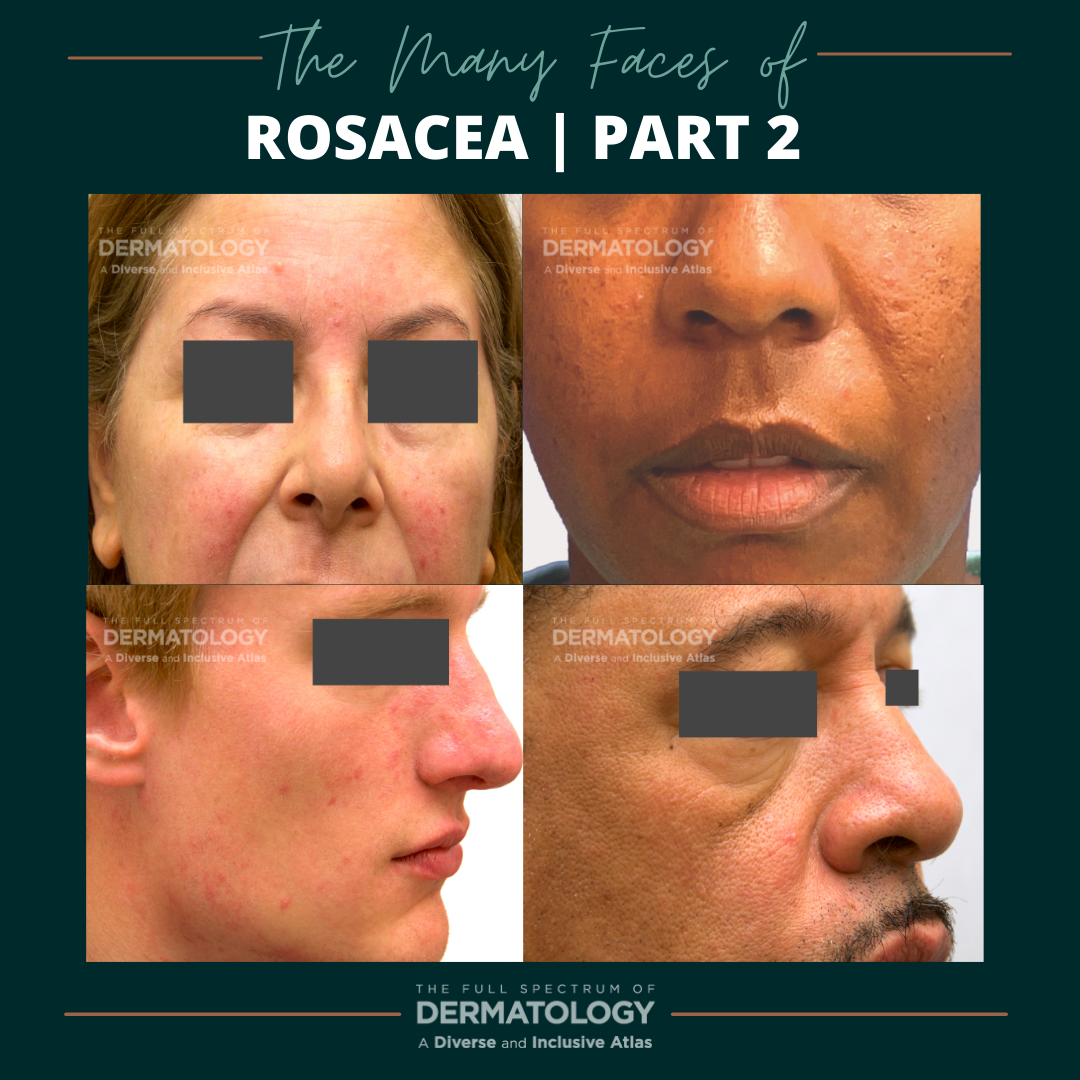Our new series, “The Many Faces of”, will showcase side-by-side images of some of the most commonly seen dermatology conditions in an array of skin tones and briefly highlight nuances in clinical presentation. All images featured in the series are part of The Full Spectrum of Dermatology: A Diverse and Inclusive Atlas, a resource developed by co-editors Misty Eleryan, MD, MS, and Adam Friedman, MD, and published by SanovaWorks and Educational Testing & Assessment Systems.
We continue our series with another look at Rosacea (if you missed Rosacea Part 1, you can see it here), a chronic condition presenting with facial erythema on the mid-face which may extend to the forehead and chin. Patients may also develop telangiectasia, papules, and pustules as well as sensation of warmth, known as “flushing.”


Erythematous papules and pustules are commonly present on the nose and cheeks in patients with the papulopustular variant of rosacea.
Nuances to Highlight
Pronounced and dilated ostia are signs of early phymatous changes that can be appreciated in darker skin tones.
Further Reading
If you would like to learn more about rosacea in darker skin tones, check out the following articles:
Acknowledgements
We thank co-editors Misty Eleryan, MD, MS, and Adam Friedman, MD for reviewing the content of this article.
Reference
Eleryan, Misty, and Adam Friedman. The Full Spectrum of Dermatology: A Diverse and Inclusive Atlas. SanovaWorks, 2021.
NOW AVAILABLE! Visit the online image gallery for The Full Spectrum of Dermatology: A Diverse and Inclusive Atlas, where you will find high-quality images that you will be able to use, free of charge, for non-commercial educational purposes. Access the online gallery here.
The Full Spectrum of Dermatology: A Diverse and Inclusive Atlas DIGITAL EDITION is available for purchase here.
Did you enjoy this article? Find more on diverse skin tones here.

